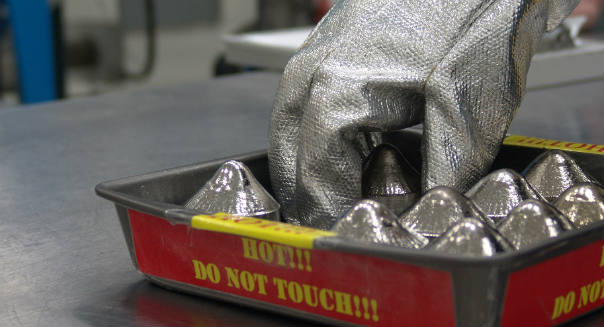Filed under: Planning

I recently switched my family's cellphones from a major national carrier to a smaller provider to save money. Purchasing the phones upfront set me back several hundred dollars, and perhaps it was because I was feeling the pinch of that major purchase, or maybe it was sheer laziness, but I procrastinated on buying cases for them. I thought about it a number of times, and meant to go online to shop, but two weeks later I still hadn't done it. Then I dropped my phone and shattered the screen. It cost me at least $100 -- twice the cost of the sturdy case I ended up buying after the fact -- to get it fixed.
In short, procrastinating cost me a fair amount of money, and it's not the first time that's happened. In fact, once I started thinking about it, I discovered I could recall a horrifyingly long list of ways I had thrown away money by putting off essential tasks. But at least I am not alone. When I polled friends and colleagues, several quickly rattled off their own experiences.
Why do we avoid taking care of important tasks at our own expense? "Fear is the number one reason people procrastinate about money," says M.C. Coolidge, a certified Martha Beck life coach. "We think we procrastinate because we're too busy, the kids have homework, the dog needs to be walked, we can't find the calculator, or we're just feeling lazy. But what's really going on is, we're so frightened we're frozen in our tracks."
More on how to fight that fear in a moment. In the meantime, here are five ways this tendency to put off the things you know you need to do can cost you dearly:
1. Penalties Add Up
My friend Barbara Brockway seems like one of the most disciplined people I know. Her careful spending allowed her family to pay off their mortgage years ago, and she's written a novel (something easy to put off until tomorrow!) while working and raising a family. But she, too, confesses that, at times, she can be the "queen of procrastination."
"There was the time when I forgot to pay the electric bill, and when we came back from vacation we found a freezer full of spoiled food and dead fish floating in the fish tank -- yeah, it was bad," she says. "There was a $50 re-connect fee, crying children and an extra night of no power, just for good measure. I found the disconnect notice in a pile of unopened mail lying on the kitchen counter."
Reconnection fees, late fees and other charges can make a small bill mushroom into a much larger one. I once was charged a $400 fee for failing to renew my corporation's annual filing with the state on time. The original bill was $150 and I had the money to pay it. I just put it off and then "forgot" about it. Other ways penalties can cost you:
- You fail to return a book to the library and your "free" book winds up costing you more than if you just bought it in the first place.
- You are late making a credit card payment -- even by just a day -- and you will likely be charged a $25 late fee (unless you happen to have a no-fee credit card). Worse, if you fail to pay it before the next month's bill is due, you will likely wind up with a late payment on your credit reports that can cost you a small fortune in additional interest.
- You let your license plate or tags expire and get an expensive ticket.
As founder of the nonprofit organization Women's Money, Gina Robison-Billups spends many of her waking hours focusing on ways to help women make the most of their money. But she learned the hard way that bargain hunting sometimes carries a price:
"I lost a ton of money because Southwest (LUV) airlines changed their policy on no-shows, and now you lose your money if you are a no-show," she laments. "This is where I did get in budget trouble because I booked four months of advanced travel to get the best rate, thinking that I could be a no-show if the trips had to be canceled and I would at least have travel funds left. I was left with nothing -- no vouchers, no money. Painful lesson," she says.
All the bargain-hunting in the world won't save you money if you neglect to notice the details in the fine print. Have you ever been hit with:
- Early termination fees for cellphone, cable or Internet services you canceled? Or worse, have you been billed for utilities or other services you weren't using because you failed to cancel them?
- Auto renewal for subscriptions or annual services you forgot about?
"The last time I saw my dentist, he told me that if I came in sooner that cavity wouldn't have turned into a root canal," says Susan Nilon. She has plenty of valid excuses for neglecting to take time out for routine appointments; after all, she's running a radio station, hosting a daily two-hour program, all while raising a teenager and volunteering for a range of local organizations. But she admits she'd save money if she took the time to take care of things like regular dental checkups. "It's the small little things that don't seem to be a big thing that turn into a big problem," she observes.
Whether it is regular dental checkups, health screenings or tests, waiting can not only cost you a fortune in medical bills later, it can even be life-threatening. And it's not just your body that can use preventive maintenance. Other routine items that can turn into costly repairs if neglected include:
- Oil changes and car maintenance such as tire rotations.
- Home maintenance such as changing an air filter on your furnace or air conditioning unit.
4. I Bought What?
Ever had the shock of getting a credit card bill that's higher than you expected? If you're not carefully tracking your spending, no doubt that's happened to you, and perhaps more than once. It's one of the reasons we wind up with credit card debt; we have good intentions of paying our bill in full but then charge more than we planned.
In my closet there are two pieces of clothing with tags still hanging from them. Both were items I planned to return after I realized I'd never wear them, but I waited too long and the time frame for returning them expired. My next plan was to sell them on eBay (EBAY), but I haven't gotten around to that, either. There's about $60 down the drain (and a reminder of that every time I look in my closet).
Though gift cards no longer carry the short expiration dates they used to, if you don't use them you are still throwing away money. If someone gave you a gift card you can't use, you may want to donate it to someone who can use it, or sell it online for cash.
5. Not Shopping When You Should
In 1969, Tom Corley's father's warehouse burned to the ground, and with it the family's business. "My Dad told me much later in life that he had been thinking about getting additional insurance on his inventory prior to the warehouse burning down," says Corley, the author of the best-seller "Rich Habits." "Unfortunately, he dragged his feet too long. At the time (1970), he had about $3 million in cash (about $20 million in today's dollars), so it was not about the money. He procrastinated and random bad luck caught him by surprise."
Whether it's checking that your insurance beneficiaries are current, or shopping for that life insurance/car/health insurance policy, sometimes the consequences of failing to act can be significant. When my homeowner's insurance rate more than doubled, I looked for a new policy. Not only did I find a better rate (with a better company) -- but I discovered I had overpaid by about $1,200 the year before.
Shopping is also important when it comes to credit. For example, you may be paying a higher rate than you need to on your credit card, car loan or even your mortgage because you haven't taken the time to look for a lower-rate credit card or loan. Or you may be paying more because you have procrastinated on checking -- or fixing -- your credit scores. This can be incredibly expensive, though. According to this lifetime cost of debt calculator, the difference between what you'll pay with excellent credit versus poor credit is nearly $160,000.
How to Tame the Procrastination Beast
Changing ingrained habits can be hard work, and there are all kinds of hurdles facing us, among them our brains and our biology. As Bob Sullivan and Hugh Thompson explain in in their book, "Getting Unstuck: Breaking Free of the Plateau Effect," our bodies evolved to rest between periods of hard work -- finding food, or running from lions -- but in our now 24/7 lifestyles, our "impulse to rest is unchecked," he writes. "Bodies at rest tend to stay at rest. Getting up always involves at least a small kick in the butt."
And sometimes the problem goes deeper, says Coolidge: "Every time we procrastinate out of fear, every time we avoid taking conscious action to take care of our finances, we're unconsciously sending a message to ourselves: 'I'm not worth the effort.' That message, in turn, perpetuates the procrastination cycle: 'I didn't take action, so I feel unworthy and because I feel unworthy, I'm not motivated to take action.' "
Sullivan and Thompson warn that changing how you get things done can be challenging: "It's essential for anyone who plans to take on the battle of distraction to know this: the temptations never go away." But there are techniques you can use to improve. Among them:
- Set a time limit. If a decision is relatively unimportant, make the time limit short and set a timer. Or delegate the decision and live with the results, suggest Sullivan and Thompson in their book.
- Take "turtle steps," Coolidge recommends. Breaking tasks that seem overwhelming into tiny steps, "will allow us to feel good about doing the barest minimum possible, won't overwhelm our to-do lists, and still moves us incrementally, and surely, toward our goals," she says.
- Create daily to-do lists. Among the five strategies Corley uses to stop procrastination, one is to create daily to-do lists which include two types: goal to-dos (activities tied to your job or to a big goal, dream or purpose in life) and non-goal to-dos (routine tasks you need to get done). With that in mind, you create each a list of the "five things that you do every day that move you forward to accomplishing some big goal, dream or purpose in life." He says "These five things could take as little as an hour to perform each day."
- Automate life. When you automate routine tasks, like setting up recurring bills on auto pay, you not only free up the time required to make those payments, you will have less to worry about. Some experts suggest you limit your wardrobe so you don't agonize over unimportant decisions like what to wear in the morning, freeing your mental energy for more important tasks.Plus, automatic payments can ensure you won't forget to make a payment, which can ding your credit scores. (You can get your free credit scores, updated monthly at Credit.com.) "I'm a big believer in setting reminders, because who thinks about finance 24/7?" says Stephanie Chan, founder of Outer Worth, a financial education website for millennial. "To avoid last-minute money stresses, I schedule reminders to notify myself of upcoming payments, filing taxes well before the rush and contributing to my retirement investment."
- Reward yourself. You saved $300 by shopping around for car insurance? Take 10 or 20 percent of that savings and splurge on a nice lunch out, a manicure or a round of golf. Use the rest to pay down debt or build your emergency savings fund.






 Have you been trying to save money, but still find yourself a little short on your rainy day fund? Sometimes putting a simple savings plan in place can do the trick. Here are a few easy ways to help you boost your budget in the new year.
Have you been trying to save money, but still find yourself a little short on your rainy day fund? Sometimes putting a simple savings plan in place can do the trick. Here are a few easy ways to help you boost your budget in the new year.





















